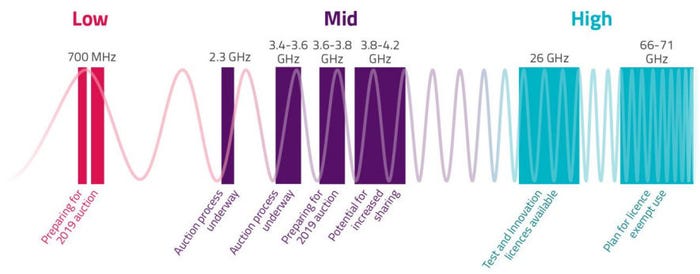Ofcom pats UK MNOs on the head for doing what they’re told
UK mobile operators vowed to hit Ofcom’s 90% geographical voice coverage target by the end of last year and they have. Good operators.
March 9, 2018

UK mobile operators vowed to hit Ofcom’s 90% geographical voice coverage target by the end of last year and they have. Good operators.
To commemorate this touching gesture of compliance Ofcom has written to each of them to say well done in a manner reminiscent of getting a commendation from a teacher. The specifics of the letters involve acknowledgment of their previous letter claiming to have done what they were told and confirming that Ofcom doesn’t think they were lying.
There are some intriguing variations within those letters, which detail the extent of UK geographical coverage by each MNO and even the date they sent their letter of claimed compliance. As you can see from the table below Vodafone, O2 and Three were all comfortably over the 90% threshold, and send their letters with plenty of time to spare. For EE, however, it seemed to go down to the wire and it just crept over the line at the 11th hour.

Inevitably Ofcom doesn’t want operators to rest on their laurels. There will be a 700 MHz spectrum band auction in 2019, we’re told, and Ofcom is proposing that spectrum should come with rural coverage strings attached. The precise nature of those strings wasn’t detailed but a balance needs to be struck between doing the right thing and turning that spectrum into a chalice, poisoned with onerous obligations.
Lastly Ofcom has published a document entitled ‘Enabling 5G in the UK’, which features a bunch of measures and top-tips designed to, well, enable 5G in the UK. 5G is the next generation of mobile technology, we’re informed, and Ofcom feels an obligation to muck in to the collective effort.
Apart from encouraging everyone with periodic pats on the head, Ofcom wants to make yet more spectrum available for 5G fun. On top of the aforementioned 700 MHz action and the stuff due to be bid on this year, Ofcom also wants to dig up some 3.6-3.8 GHz spectrum for auction in 2019. Apart from that 26 GHz seems to be the targeted millimetre wave band and there are some vague aspirations for 66-71 GHz too.

There are some other initiatives, such as trying to make accessing base station sites easier, helping out with backhaul by stimulating fibre investment, and making sure European net neutrality regulations don’t get in the way of network slicing. On the whole this set of announcements paints a plausible picture of Ofcom being on top of things, which is presumably one of the main reasons for issuing it.
About the Author(s)
You May Also Like








.png?width=300&auto=webp&quality=80&disable=upscale)


_1.jpg?width=300&auto=webp&quality=80&disable=upscale)


.png?width=800&auto=webp&quality=80&disable=upscale)